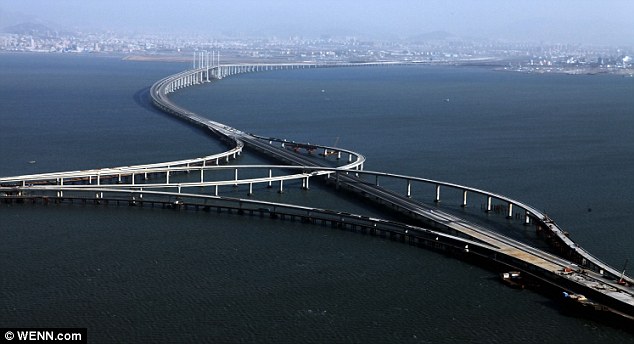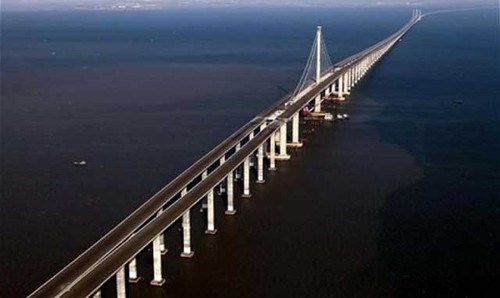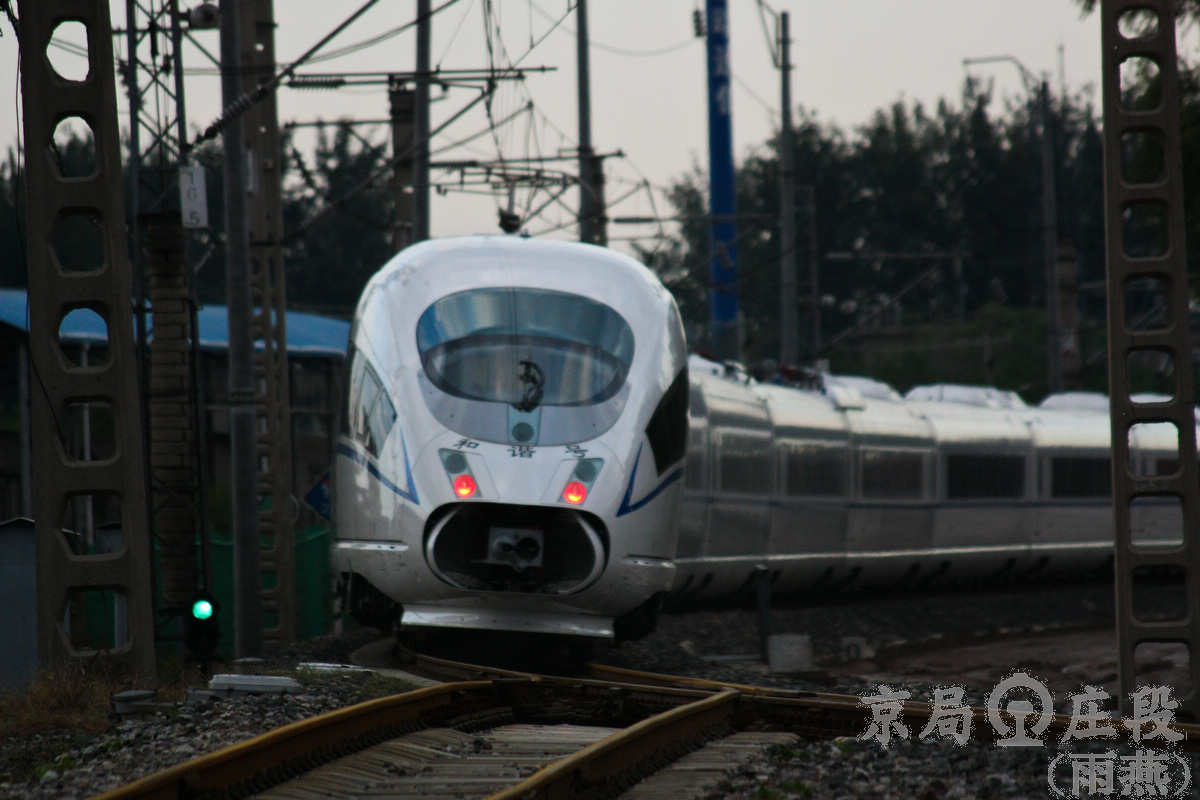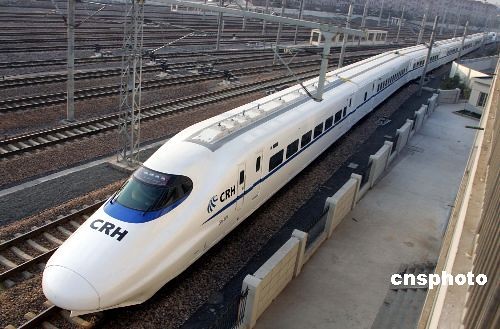China Notches Another World Record – The Qingdao Haiwan Bridge Is Now World’s Longest Sea Bridge
(Source: Gizmodo via Telegraph)
At 26.4 miles long, the Qingdao Haiwan Bridge would easily cross the English Channel and is almost three miles longer than the previous record-holder, the Lake Pontchartrain Causeway in the American state of Louisiana. The vast structure links the centre of the booming port city of Qingdao in eastern China‘s Shandong Province with the suburb of Huangdao, spanning the wide blue waters of Jiaozhou Bay.
Here is a collection of some amazing and interesting factoids gleaned from the parent articles cited above:
- You can easily run a marathon, entirely on the bridge span, and still will have 0.2 miles left before you set foot on Terra Firma (Marathon = 26.2 miles)
- Built in just four years at a cost of £5.5 billion ($8 Billion USD)
- Will feature a six-lane road bridge that is supported by more than 5,200 columns
- When it opens to traffic (in late 2011) , the bridge is expected to carry over 30,000 cars a day
- Expected to cut the commute between the city of Qingdao and the sprawling suburb of Huangdao by between 20 and 30 minutes.
- At least 10,000 workers were involved in building the bridge, in shifts around the clock
- Built with 450,000 tons of steel, which is roughly the equivalent of steel used in almost 65 Eiffel Towers
- 2.3 million cubic meters of concrete, which is roughly the equivalent of filling 3,800 Olympic-sized swimming pools
- The bridge will be strong enough to withstand a magnitude 8 earthquake, typhoons or the impact of a 300,000 tonne vessel.
- With its economy growing by 16 per cent a year, Qingdao is one of China’s fastest-growing and most prosperous cities.
- The main port of the Chinese navy and home of Tsingtao Beer, China’s best-known brew, it hosted the sailing events of the 2008 Beijing Olympics.
What’s more astonishing. It would be this: “China is already home to seven of the world’s 10 longest bridges, including the world’s lengthiest, the 102 mile Danyang-Kunshan rail bridge, which runs over land and water near Shanghai. And with Beijing pumping billions into boosting China’s infrastructure, the Qingdao Haiwan Bridge will not be the world’s longest sea bridge for very long. According to the Telegraph, work started in December 2009 on a 31 mile bridge that will link Zhuhai in southern Guangdong Province, China’s manufacturing heartland, with the financial centre of Hong Kong. The £6.5 billion project is expected to be completed in 2016.”
Now, building the infrastructure at this break neck pace and still flush with more cash than a machine can count, China is not too far from becoming the Numero Uno aka the Big Daddy of the World economy.
Related articles
- China builds world’s longest bridge (telegraph.co.uk)
- China has built the longest bridge in the world… so you don’t have to dig that hole (engadget.com)
- World’s longest bridge completed (thesun.co.uk)
- China claims longest bridge over water with whopping 26-mile span (dvice.com)















